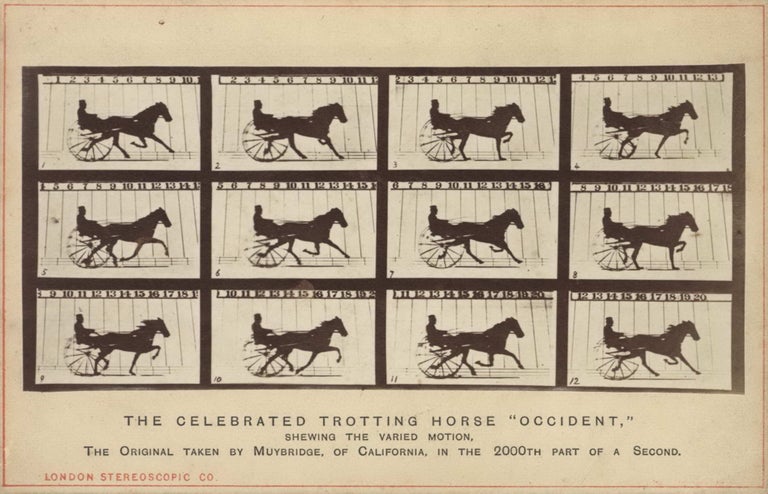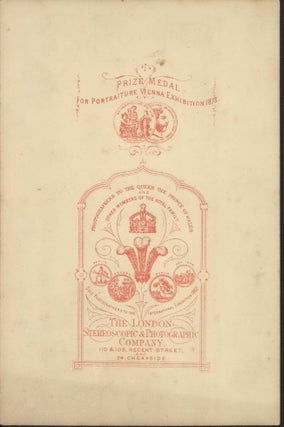The Celebrated Trotting Horse “Occident”
c1878/1881. Albumen paper photograph, cabinet card format, text in letterpress including caption and publisher’s line on original backing below image and verso, gallery label on back of mount, 7 x 15.5cm (image), 11 x 16.6cm (backing). Slight silvering and foxing, laid down on original backing. Caption continues “Shewing the varied motion, the original taken by Muybridge, of California, in the 2000th part of a second.” Text on backing verso includes “The London Stereoscopic & Photographic Company. 110 & 108, Regent Street and 54, Cheapside. Photographers to the Queen and the Prince of Wales and other members of the royal family. Sole photographers to the International Exhibition 1862. Prize medal for Portraiture, Vienna Exhibition 1873.” Gallery label includes “Church Street Photographic Centre, 384 Church St, Richmond [Victoria].” Eadweard Muybridge’s first experiments to capture motion were commissioned by Leland Stanford (Amer., 1824–1893), an industrialist, founder of Stanford University, former governor of California, and horseman, who wanted evidence to prove that during its gait, all four of a horse's hooves are simultaneously off the ground. In 1872, Muybridge settled the debate with a single photographic negative showing Stanford’s trotting horse, Occident, airborne at the trot. However, the image was not well-defined, and the negative was lost. In 1878, Muybridge, supported by Stanford, substantiated the 1872 image, using 12 sequential cameras along the racetrack. Ref: Wiki (incl. The Horse in Motion). Eadweard Muybridge was an English-born American photographer “known for his pioneering work in photographic studies of motion, and early work in motion-picture projection.” Muybridge is also known for his groundbreaking work on “animal locomotion between 1878 and 1886, which used multiple cameras to capture the different positions in a stride,” and for a device for “projecting painted motion pictures from glass discs that pre-dated the flexible perforated film strip used in cinematography. From 1883 to 1886, he entered a very productive period at the University of Pennsylvania in Philadelphia, producing over 100,000 images of animals and humans in motion, occasionally capturing what the human eye could not distinguish as separate moments in time.” This photograph of Occident trotting seems to be an uncommon English issue; the other issues were predominantly American.
Item #CL206-15
Price (AUD): $13,500.00 other currencies


